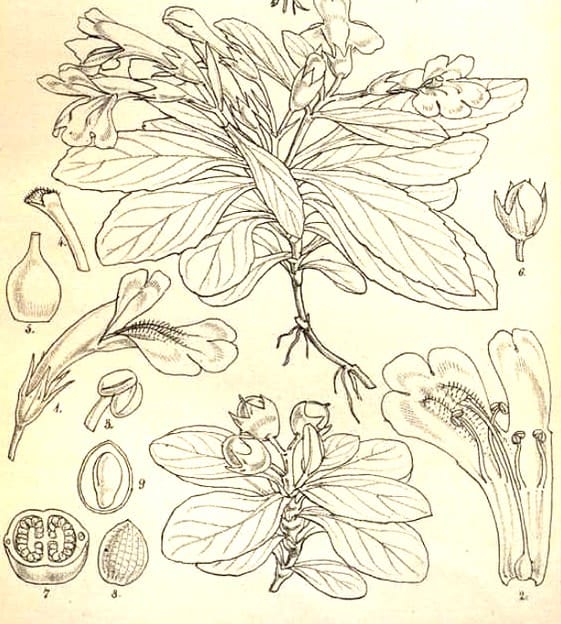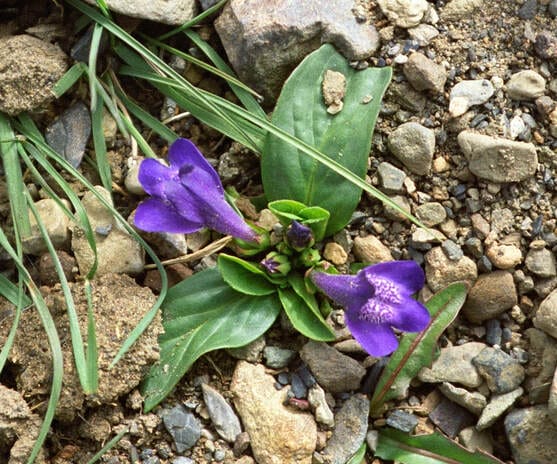Lancea, Spa yag rtsa ba སྤ་ཡག་རྩ་བ
Chinese MilkwortSpa yag rtsa ba (Tibetan)
 Lancea tibetica
Lancea tibeticaHooker’s journal of botany and Kew Garden miscellany, vol. 9 (1857)
 Lancea tibetica
Lancea tibetica(Photo by Jan Reurink) (Wikimedia)
Botanical name:
Lancea tibetica
Parts used:
Whole plant including the root; Seed
Temperature & Taste:
Cool, dry. Sweet, slightly Bitter
Constituents:
-Phenolpropanoid glycosides (34)
–Lignanes
-Flavones (9)
-Triterpenoids (6); inc. ursolic acid and oleanolic acid
-Amino acids (11)
-Enzyme (NADH dehydrogenase)
Uses:
1. Clears Heat, Stops Cough:
-Lung disorders with Cough, shivering with coldness
-Bronchitis, Influenza, Asthma and Pneumonia
-Lung abscess; clears Pus from the Lungs; pus and foul matter in the sputum (root)
2. Clears Heart Fire:
-Heart disease (with Heat)
-Heat affecting the Heart; upper back pain, heat sensation in the chest, delirium (Seed)
3. Clears Liver Heat:
-various skin diseases
-Liver diseases (flower)
4. Moves the Blood, Clears Stasis:
-Wounds, internal and external
-Blood stasis, Blood clots, Hematoma, Vascular disorders
-Amenorrhea and Gynecological diseases
-Tumors of the Womb
-reportedly used for Leukemia
Dose:
Powder: 1–3 grams
Comment:
The root is reportedly smoked as a stimulant by Tibetans.
Substitutes:
1. This is a member of the Scrophulariae family. Figwort (Scrophularia spp., Xuan Shen) is probably a good substitute for most of the indications.
2. Salvia miltiorrhiza (Dan Shen) has been listed as a source of Spa Yag Rtsa Ba by some authorities on Tibetan Medicine. This may likewise be a suitable substitute in some instances.
Main Combinations:
1. Lung heat Cough, Chronic Bronchitis etc.:
i. Lancea with Sandalwood, Tabasheer, Swertia, Inula, Raisins (as in Principle 25)
ii. Lancea with Tabasheer, Safflower, Clove, Licorice, Triphala, Costus, Raisins (as in Tabasheer 25)
Major Formulas:
Death Healing Nectar (Tibetan Medicine)
Principle 25 (Gtso bo nyer lnga) (Tibetan Medicine)
Tabasheer 25 (Cu Gang 25) (Tibetan Medicine)
Cautions:
None noted
Main Preparations used:
1. Lancea tibetica as the Tibetan herb: A review of its phytochemistry and pharmacology
